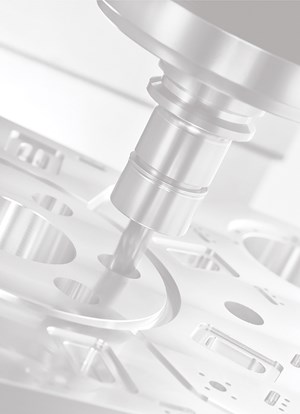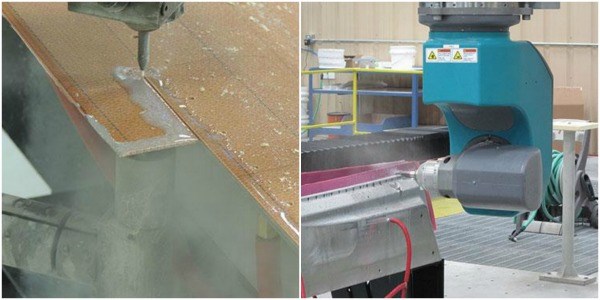When to Waterjet, When to Mill
A composite parts manufacturer in Nebraska recently installed a combined five-axis waterjet/milling machine to position itself to win large-scale aerospace work it sees on the horizon.
Share



This Composites Machining Cell enables Royal Composites to perform both five-axis waterjet and milling operations for large aerospace components.
Abrasive waterjet machines offer distinct advantages for trimming composite materials. For example, waterjet machining has inherently low cutting forces, so fixtures need not be as bulky as those required for conventional milling operations. Plus, garnet abrasive media serve as a waterjet stream’s “cutting edges,” and fresh media are continually introduced into the stream. Therefore, the stream’s cutting edges are always sharp, whereas conventional routing and drill bits can wear, possibly resulting in delamination or burred edge finishes. However, in some cases, milling is the only viable machining process due to fixturing interference or other issues.
In this story, learn how Royal Engineered Composites will use a machine that features both five-axis waterjet and milling capabilities to perform both of those operations as it goes after large-scale aerospace work.
Related Content
-
Briquetting Manufacturer Tools Up for Faster Turnaround Times
To cut out laborious manual processes like hand-grinding, this briquette manufacturer revamped its machining and cutting tool arsenal for faster production.
-
Shoulder Milling Cuts Racing Part's Cycle Time By Over 50%
Pairing a shoulder mill with a five-axis machine has cut costs and cycle times for one of TTI Machine’s parts, enabling it to support a niche racing community.
-
High-Feed Machining Dominates Cutting Tool Event
At its New Product Rollout, Ingersoll showcased a number of options for high-feed machining, demonstrating the strategy’s growing footprint in the industry.














 (4).png;maxWidth=300;quality=90)





